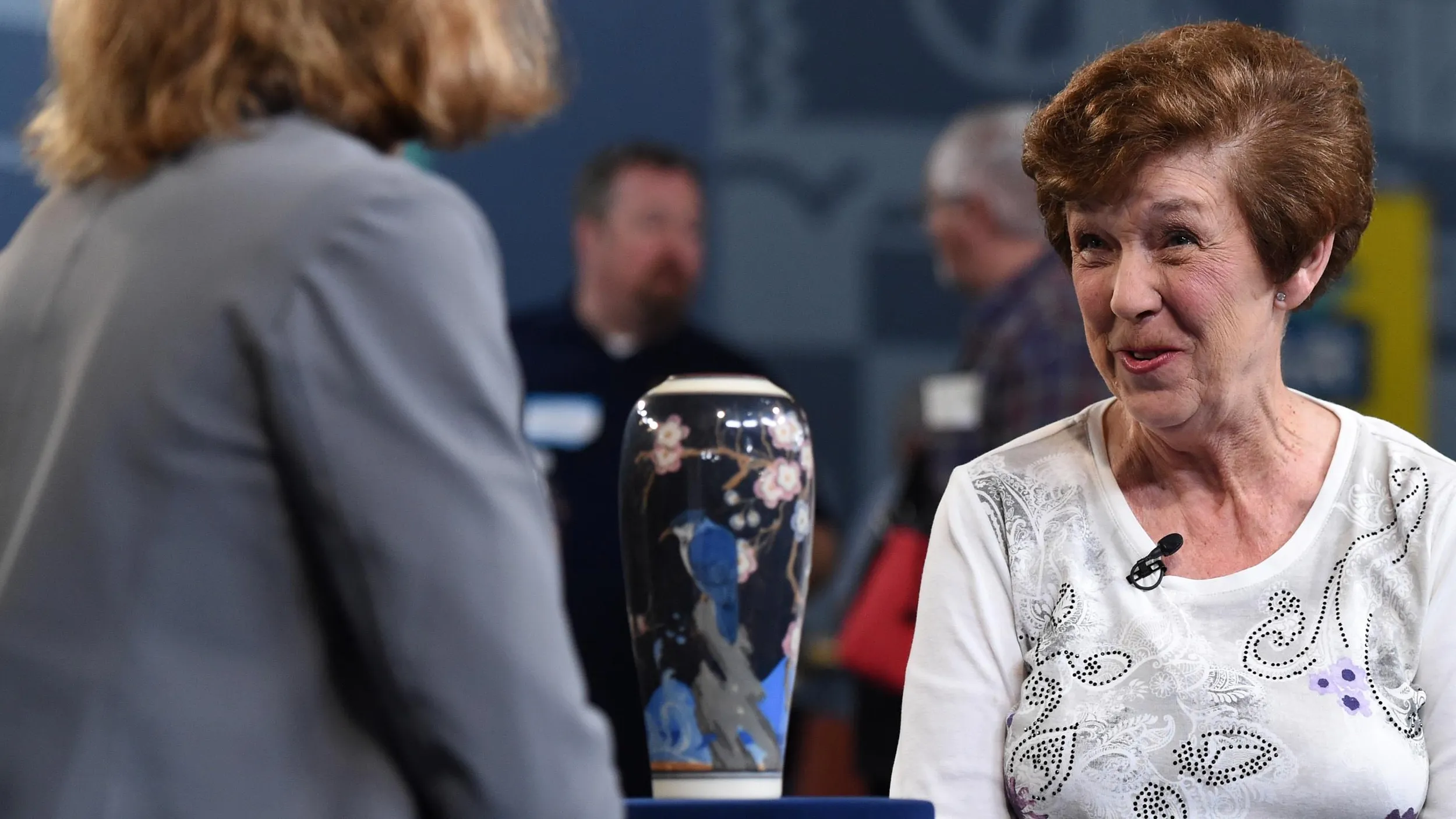GUEST: It came from my Grammy Mackis. Her husband and my great-grandfather had a store here in Cleveland. The would travel all over the world buying things. This wound up in an apartment on the floor at my Grammy Mackis's. I always thought it was really beautiful. One day she said, "Well, why don't you take it with you?"
APPRAISER: Most of these jars were made as water containers, as water jars. It comes from New Mexico. When everyone at the table saw it, they quickly thought it was Acoma Pueblo, but it's not. Acoma jars are thinner and just slightly different. And if you reach up here, you feel there's a thickness to the rim. And the closest Pueblo to Acoma that makes jars with a similar design, with the flowers on it, would be Laguna.
GUEST: Hm.
APPRAISER: So we all agreed that it comes from Laguna Pueblo. I think it dates to somewhere between 1900 and 1920, probably. It's hard to get much more specific than that. The Spanish name for these jars is olla, O-L-L-A. But anything this shape, whether it's a jar or a basket, usually ends up with the Spanish name olla.
GUEST: Mm.
APPRAISER: All the Pueblo people-- Acoma, Zia, Zuni, Laguna-- they all made these olla-shaped jars. So it's not an unusual shape, and it's not an unusual size. You see them slightly bigger than this, but not a lot. The white on it, there's two ways to do that. One way they did it, they dipped them into a mineral solution to get the color on before they fired it. And the other way was to wipe it on with a rag. And this is what's called a rag wipe. As you go around here, you can see what looks like rag marks where the white was wiped on with the rag.
GUEST: Hm.
APPRAISER: And then it was over-painted with a design on top of it. The black was done with a very, very fine brush, and the brush would have been made out of animal hair tied on a stick. It could have been horsehair, it could have even been human hair. These are handmade from locally dug clay. They would dig the clay, take it back, process it by hand, mix it with water to the right consistency, and these were coiled. And if you run your hand up the side, you can feel the ribs of the coil. And that means they rolled out a long cylinder of clay, a tube, and started making a coil from the bottom out. And as they made it, they would smooth it. It has a bottom very much like an Acoma pot. It's domed up, and you can see it's got this curve up in it.
GUEST: Mm-hmm.
APPRAISER: It's very sharp. And that's what you'd expect to see on an Acoma pot. But again, the thickness is very much more what you'd expect at Laguna. It's a very beautiful pot, slightly irregular, which is what you'd expect out of a piece from that time period. And it was made to use. It wasn't just made to sell to tourists by the side of the road; it was something that would have been in the tradition of that Pueblo. If you went into a shop where this would be for sale now, an art gallery, somewhere between $3,000 and $3,500.
GUEST: Wow.
APPRAISER: And… I think I'm being fairly conservative.



